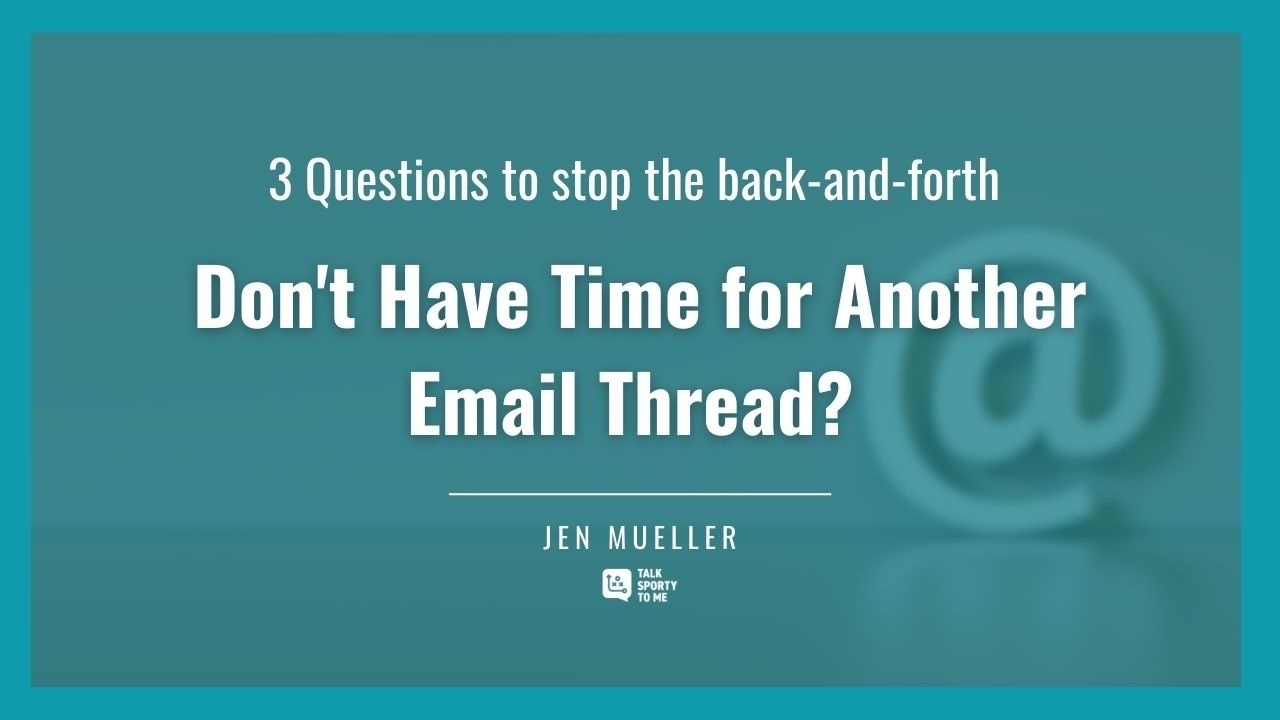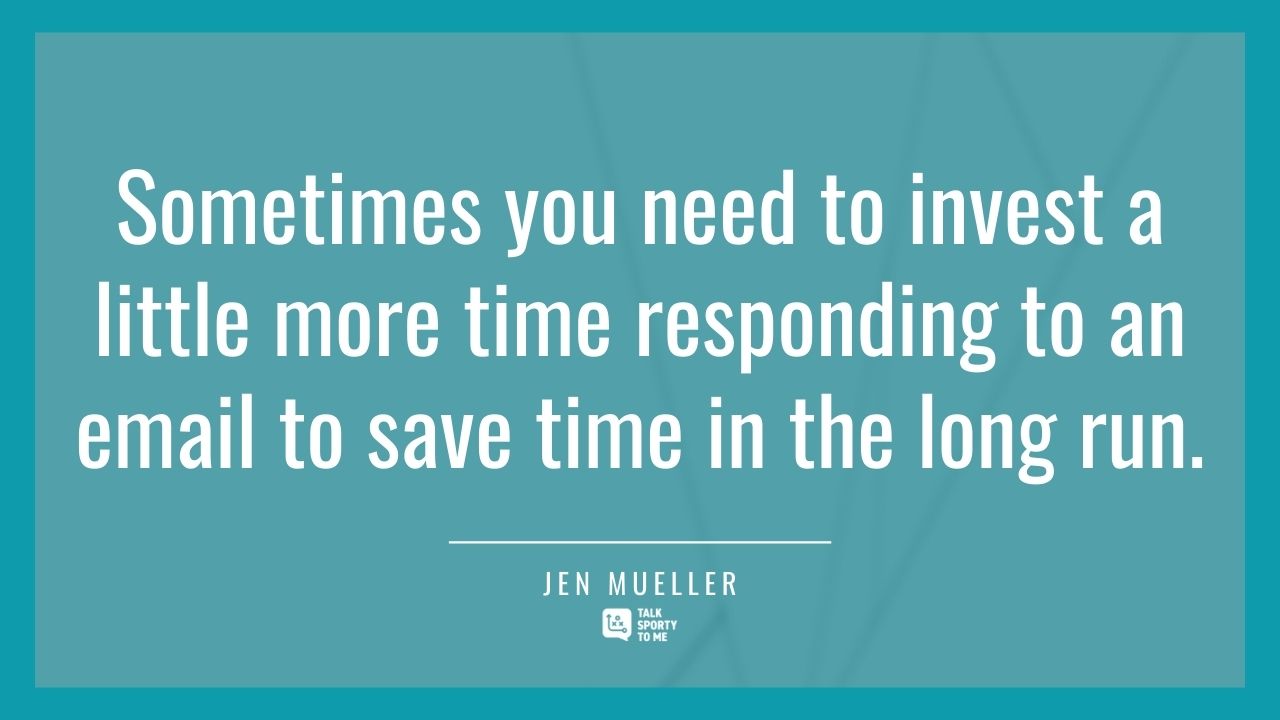Not Another Email Thread! 3 Questions to avoid the back and forth

Did you know that research has shown the average person sends and receives 121 emails a day while at work?
Researchers have also determined every time you are distracted by an email it can take 23 minutes to fully get over a distraction.
If your response to that information is, “I don’t have time for that!” We’re in the same boat.
I’m amazed at how many times I say that… and then inadvertently create more work for myself that leads to even more frustration. For example, getting an email I don’t have time for, and then being forced to deal with a dozen follow up messages because every response from me lacks enough detail to be truly helpful.
Firing off a quick reply to the initial email makes it feel like I’m dealing with it and getting something off my plate but the reality is - I’m creating more work for myself because I’m rarely addressing the actual issue. And I’m much more likely to allow my emotions (usually frustration or irritation) to influence my reply which often shows up as curt, incomplete responses.
As the email chain gets longer and longer I will silently seethe and get increasingly annoyed at how inconsiderate everyone else is because – don’t they know I don’t have time for this?!
It’s only after the fact I realize my mistake. The irrefutable fact that if I would have allotted five or even 10 minutes of the time I didn’t think I had to craft a thoughtful intentional response I could have spared myself and my colleagues the hassle.

Sometimes you need to invest a little more time responding to an email to save time in the long run. Here are 3 questions you can use to help you respond in a way that helps you get to a successful resolution in less time.
1. What’s my objective?
If your initial reaction is “Just get it done” I’m going to encourage you to rethink your answer. I get it, there are some things you just need to power through and be done with but that’s rarely the most productive way to think about business/professional interactions. Take 30 seconds and think about what you’re trying to accomplish. What does a successful outcome look like?
A successful outcome could be having resolution in two emails. It could be getting a specific piece of information you need to move forward on a project. Be as specific as you can when determining your objective.
2. Can you picture both sides of the exchange?
As a sports broadcaster who’s job includes daily interviews with athletes this is second nature for me, but it’s funny how often I skip this step with my colleagues. I assume my colleagues can read my mind, recall our past conversations or have intently read my previous emails. Even if they could they’ve probably forgotten because guess what? They don’t have time for this either.
A well thought out response that includes context can help everyone get the answers they need quicker. Take 45 seconds to read your responses through the lens of the colleague receiving your response. If it were you, what information would you need to get resolution? What questions would you still have? Does the done of the email feel combative? Helpful? Neutral? Short?
If your objective is to get a resolution in two emails these are the types of questions you need to consider.
3. Is the response easy and obvious?
If you’re expecting a response, even confirmation an email was received – make it obvious. It might not be your nature to ask direct questions, but they can be the best way to get a response in a timely manner (which saves you time) and get the information you need.
For example: “Let me know if you have any questions or concerns” becomes “I will finalize the PowerPoints by 5pm Wednesday. Does that work for you?”
The answer to the second question is obvious and easy. (And by obvious we mean obvious to the person receiving and responding to your email.) The answer in that example is yes or no. It’s pretty obvious. The response could be more than one word but you’ve made it easy for them to fire off a response that moves everyone toward the desired outcome.
You know the overwhelm of an inbox full of unanswered emails. They can be tough to tackle – especially when you don’t have time. You can lessen the overwhelm of your colleagues and make life easier on yourself when you use this strategy.
Answering these three questions can take 2-3 minutes. Crafting the email response can take a little longer but I promise a strategic, thoughtful reply will save you the headaches and hassles you didn’t have time for in the first place.


